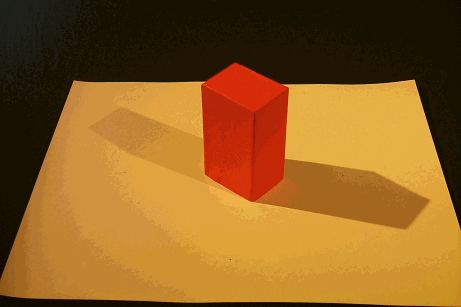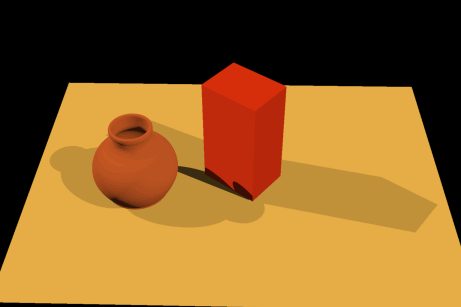COMPUTER VISION PROJECTS
A real scene
A synthesized scene |
Illuminant Direction Determination for Multiple Light Sources In the early 1980s, Pentland observed that the human's eye is sensitive to the change of intensities. On an image of a smooth surface, the change of intensities is maximal whenever the illuminant direction is perpendicular to the normal of the surface. This motivates us to introduce the concept of critical points, where the surface normal is perpendicular to some light source direction. Apparently, the illuminant direction has a simple geometric relationship with the corresponding critical points. In this paper, for simplicity reasons, we restrict our discussions to the shading of a Lambertian sphere of known size in a multiple distant light source environment. A novel global representation of the intensity function is derived. Based on this intensity characterization, the least-squares and iteration techniques are used to determine critical points and, thus, the light source directions and their intensities if certain conditions are satisfied. The performance of this new approach is evaluated using both synthetic images and real images. As an application, we use it as a tool to determine light sources in real image synthesis. The experimental results show that this technique can be used to superimpose synthetic objects with a real scene. References Y. Zhang and Y.H. Yang, "Multiple illuminant direction detection with applications to image synthesis," IEEE Trans. on Pattern Analysis and Machine Intelligence, Vol. 23, No. 8, 2001, pp. 915-920. Y. Zhang and Y.H. Yang, "Illuminant direction determination for multiple light sources," Proc. IEEE Conf. on Computer Vision and Pattern Recognition, June 13-15, 2000, Hilton Head Island, South Carolina, pp. 269-276.
|
|
Theoretical Analysis of Illumination in PCA-based Vision Systems In this paper, we address the problem: How to account for arbitrary illumination e¤ects for a pose of an object in PCA-based vision systems. This is a key problem since after solving this problem, the approach can be applied directly to an arbitrary number of poses of an arbitrary number of objects. We solve this problem by Þrst generating an analytic closed-form formula of the covariance matrix for a special lighting condition. Then after analyzing all possible illumination e¤ects, an equation called the illumination equation is derived to account for arbitrary illumination e¤ects. Experiments on simulated conditions and real world conditions conÞrm the advantages of our new methods. A direct application of current research is that for any pose, our method can be used to compress the image of the object in any possible illumination. This is demonstrated in the real world experiment in the paper. Furthermore, this paper gives a new framework on how to address illumination e¤ects in computer vision in general. Reference L. Zhao and Y.H. Yang, "Theoretical Analysis of Illumination in PCA-Based Vision Systems," Pattern Recognition, Vol. 32, No. 4, 1999, pp. 547-564.
|
||
|
|

